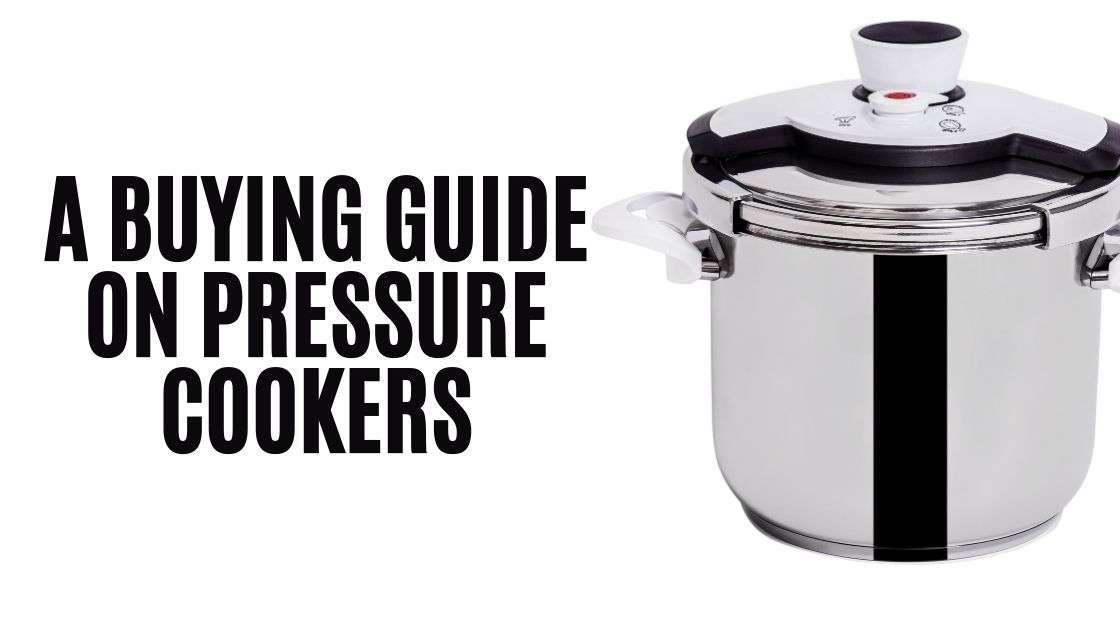
Oct 1,2024
When it comes to saving time and cooking fast food, the kitchen instrument you can rely on to whip up a dish quickly is a pressure cooker, apart from a relatively quick cooking time. The pressure cooker is a versatile piece of equipment that can be used to prepare a wide range of cuisines.
Pressure cooker design has evolved over the years, and nowadays, there is an extensive variety of pressure cookers available, with each model having a variety of features. Here we will probe in the factors you should keep in mind before buying a pressure cooker for your needs.
A pressure cooker has become a part of every commercial or home kitchen setup due to many reasons. Let us take a look at the benefits it provides in food preparation and makes cooking easier and hassle-free.
The chief and most significant benefit that a pressure cooker can make in the kitchen is that it reduces cooking time. This translates to greater productivity in the case of commercial kitchens, which need huge quantities to be cooked in less time to fulfill the order schedule.
The pressure cooking method makes sure to retain the vital nutrients in the food, such as vitamins and minerals.. Other methods of cooking, like steaming and microwaving, result in a loss of nutrients, so for all the health-conscious people out there, if you want to maintain health and keep your body nourished, pressure-cooked dishes are the way to go.
Nowadays, energy conservation is the most important factor, and pressure cookers are your friends in this regard. They consume less gas while cooking food to a perfect taste.
Cooking becomes hassle-free with the use of a pressure cooker as the food cooks by itself with minimum monitoring or involvement in the case of normal pressure cookers and no involvement in the case of electric pressure cookers. Only the addition of water is the only prerequisite.
Today's pressure cooker incorporates all safety features, and the chances of accidents are minimal. Cooking on an open pot has more chance of kitchen accidents like getting scorched by liquids or spills.
Pressure cookers have built-in spring valves for controlling pressure. The latest pressure cookers do not have a spring valve that is noisy, and the familiar periodic hissing sound in old-design pressure cookers is missing in the modern pressure cookers of today as they operate quite silently.
They also need less energy to function and are more efficient and faster in building up the heat. Electric cookers, one step ahead of traditional pressure cookers, have a different type of valve called a weighted float valve that is as efficient as a spring valve. Electric pressure cookers are even more efficient in controlling the heat since the heat is controlled through automatic switching on/off the heating element.
Whether you are cooking rice or spicy dishes, the pressure cooker should be made of a sturdy material that can withstand pressure and heat and does not react with spices. You will find plenty of aluminum pressure cookers in the market, but they are not durable enough to bear the pressure and, with time, will lose shape. Moreover, they tend to react with spices and give a metallic taste to the food.
When it comes to controlling pressure, the more variable the settings, the greater choice you will have in altering the heat and cooking the ingredients to perfection. At the minimum, the pressure cooker should consist of two settings.
A high-pressure setting for meats, legumes, and other hard substances that take time to cook and a low-pressure setting for fish, pasta, or eggs.
There are various ways to select the pressure settings. Pressure cookers can feature a button on the lid. The electric ones have buttons. Although many electric pressure cookers will display five or six pressure settings, you don't need so many as most recipes only need a couple or more.
Some parts of the pressure cookers wear out easily, such as sealing gaskets, as well as parts of safety valves. These parts will routinely be required to be replaced. Therefore, buying a pressure cooker from a reputed brand would make sourcing these parts easier, and you will be able to buy the required parts with the after-sales of the pressure cooker manufacturer.
Modern industrial pressure cookers come equipped with a variety of fail-safe measures to ensure your cooking experience is as secure as it can be. Whether you're using an electric or stovetop pressure cooker, you can count on the following safety features:
This lid keeps your pressure cooker securely closed when there's any pressure inside. Electric pressure cookers remain locked even in the absence of electricity.
If the pressure inside the cooker gets too high, the main pressure valve springs into action to release the excess pressure. And just in case that first valve gets clogged or overwhelmed, there's a second valve ready to step in and alleviate the pressure.
In the rare event that both primary and secondary pressure release valves fail to function, there's another backup plan. Pressure will escape through a small opening in the lid or into the pressure cooker body, which, for electric pressure cookers, will trigger a safety mechanism that turns off the appliance.
The beauty of electric pressure cookers is their ability to monitor the situation using internal temperature readings. If something seems awry, these smart devices have your back and will automatically shut off to prevent any mishaps.
Some of the higher-end pressure cooker models go above and beyond with additional safety features. To get the full scoop on these advanced safety systems, consider taking a look at the images and descriptions in our in-depth pressure cooker reviews.